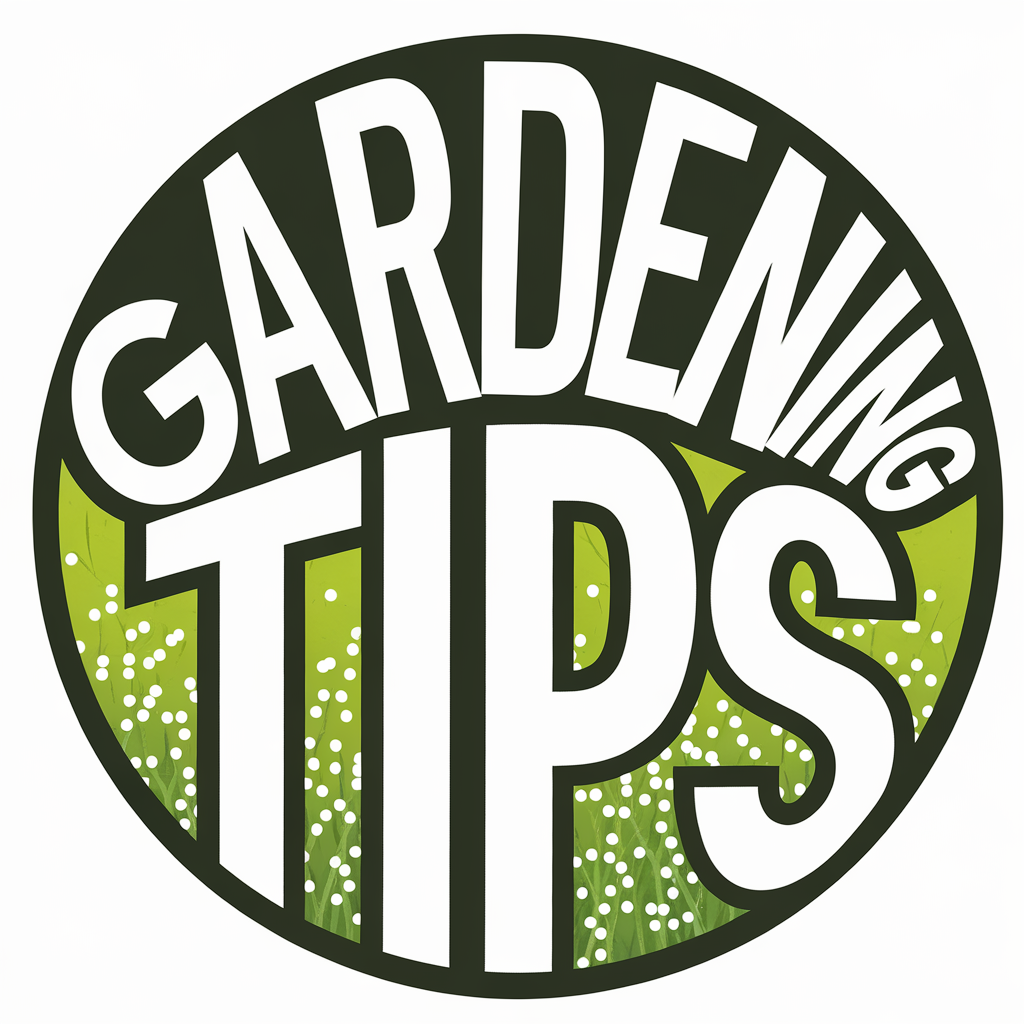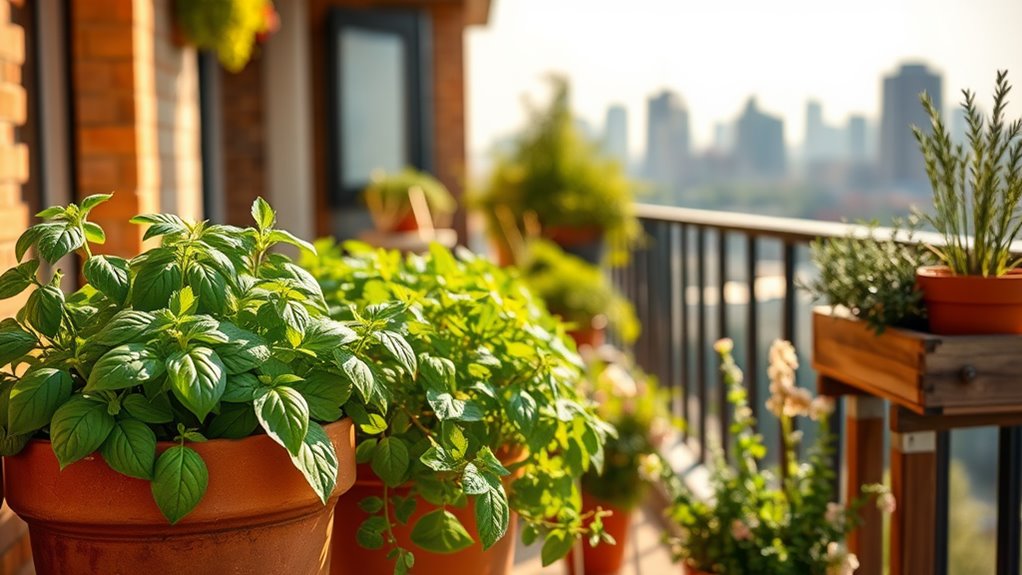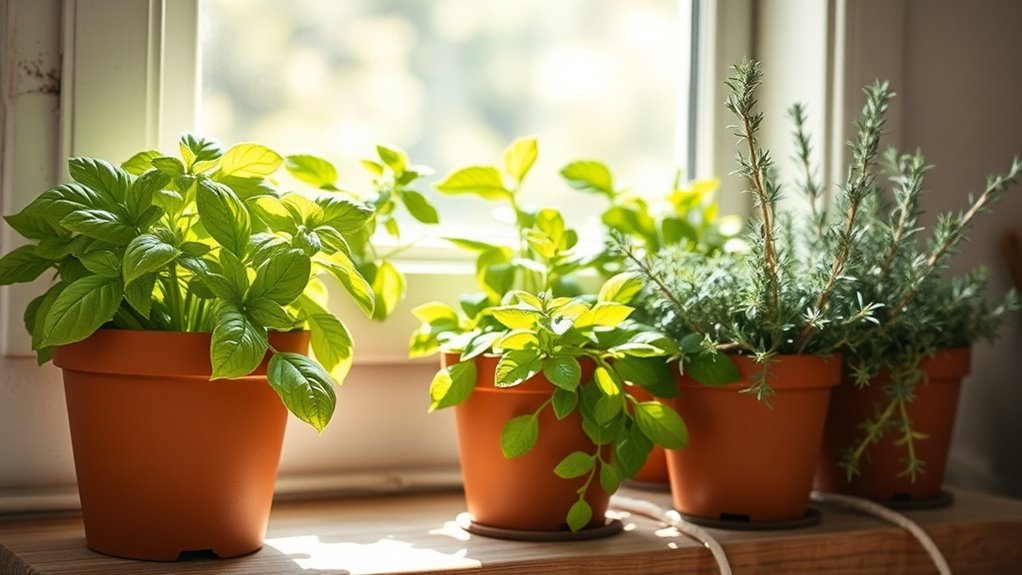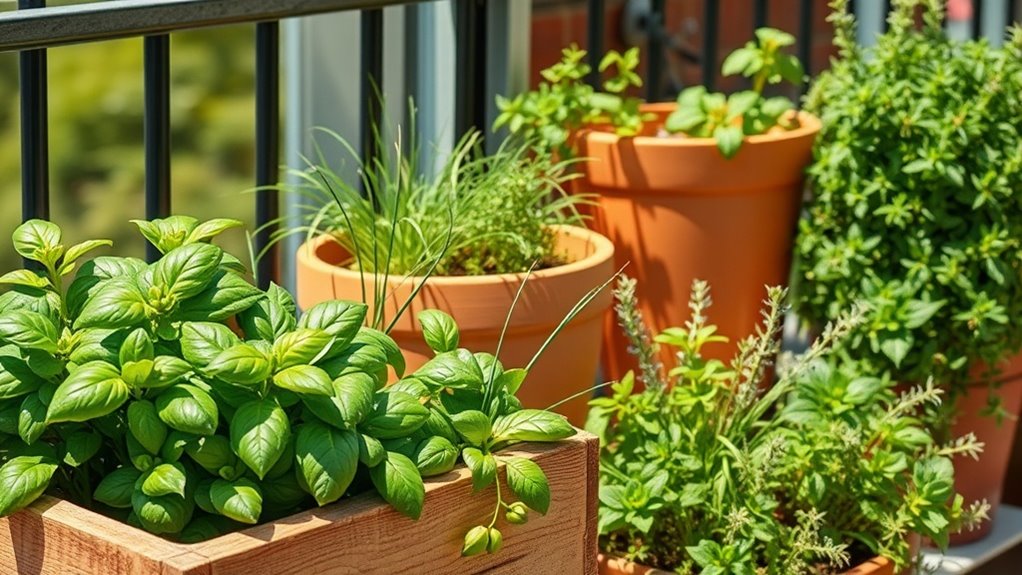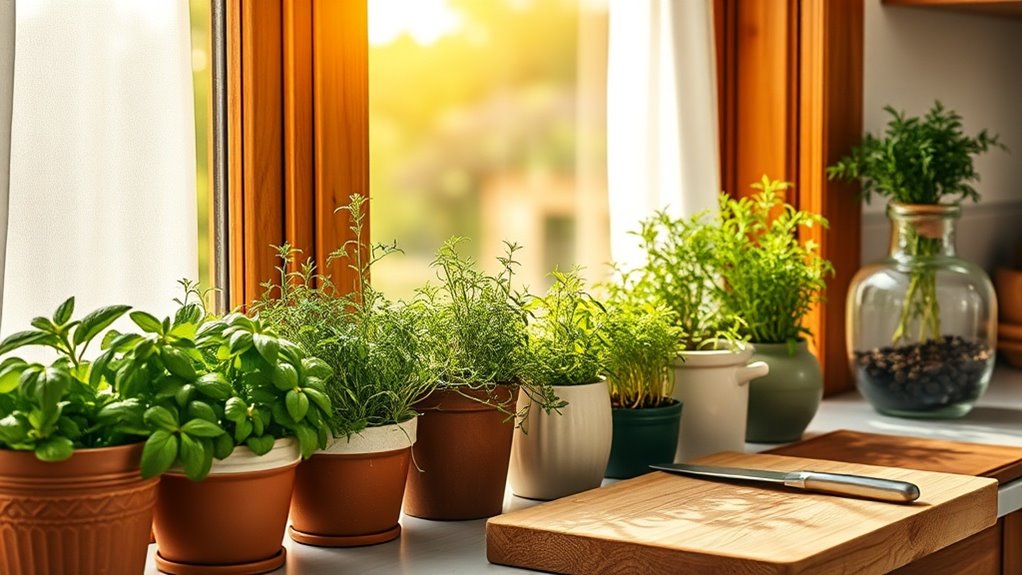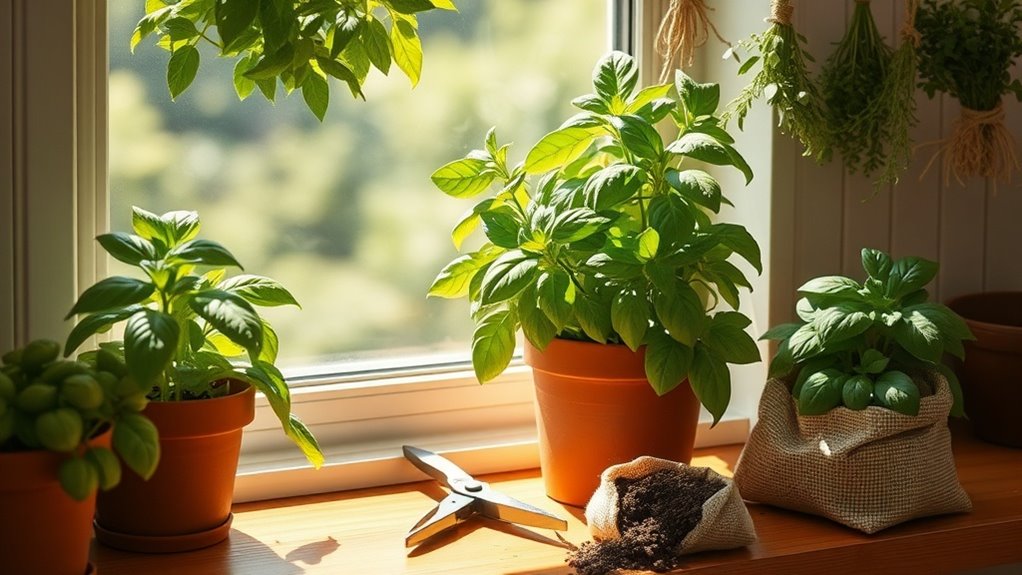The Secret Sauce to Lush Herb Gardens in Small Spaces!
To create a lush herb garden in small spaces, choose compact herbs like basil and chives, and opt for versatile perennials such as oregano. Use containers with proper drainage and lightweight materials for easy rearrangement. Prioritize high-quality potting mix and organic fertilizers to enhance growth. Don’t forget about sunlight—aim for at least six hours daily and position taller plants strategically. By applying these techniques, you can transform your space into a thriving herb haven. Discover more tips to elevate your gardening success!
Choosing the Right Herbs for Limited Space
When you’re working with limited space, selecting the right herbs can make all the difference in creating a thriving garden.
Focus on compact varieties like basil, chives, and thyme; they not only grow well in small pots but also offer robust flavors.
Consider perennial herbs like oregano and rosemary, too, as they return year after year, maximizing your investment.
Opt for herbs that are versatile in the kitchen, allowing you to use them in a variety of dishes. Additionally, many of these herbs are well-suited for container gardening, making them ideal for small spaces.
Optimal Container Gardening Techniques
How can you make the most of your limited gardening space with containers? Start by selecting the right-sized pots for your herbs. Make sure they have proper drainage to avoid root rot. Utilize vertical gardening by stacking pots or using shelves to maximize space. Choose lightweight materials for easy mobility, allowing you to rearrange as needed. Here’s a quick guide to help you choose the best containers:
| Container Type | Best Herbs |
|---|---|
| Clay Pots | Basil, Oregano |
| Plastic Pots | Chives, Mint |
| Fabric Pots | Thyme, Cilantro |
| Vertical Planters | Parsley, Sage |
Incorporating low-maintenance herb gardening techniques ensures that your garden will flourish!
Soil and Nutrient Management for Healthy Growth
Healthy growth starts with a well-balanced soil mix and essential nutrients.
Here are key points to keep in mind:
- Use high-quality potting mix for good drainage and aeration.
- Incorporate organic fertilizers, such as compost or worm castings, to boost nutrient content.
- Monitor pH levels regularly, aiming for a range of 6.0 to 7.0 for ideal herb growth. Additionally, consider composting in small spaces to create nutrient-rich soil amendments that enhance your herb garden’s vitality.
Innovative Vertical Gardening Solutions
Ever wondered how to maximize your herb garden’s potential in a limited space? Vertical gardening offers a brilliant solution. By utilizing wall planters, hanging pots, or tiered shelves, you can create an edible oasis that takes advantage of vertical space. Lightweight materials like fabric pockets or modular systems allow for easy installation and mobility. Consider using hydroponics or aquaponics systems to enhance growth while saving floor space. With a little creativity, you can transform any bare wall into a thriving herb haven. Incorporating one extraordinary herb can significantly elevate your gardening success. Embrace these innovative solutions, and watch your culinary herbs flourish, even in the tightest of urban spaces!
Maximizing Sunlight and Water Efficiency
Creating an efficient herb garden goes beyond just vertical space; it’s also about harnessing sunlight and optimizing water use.
You’ll want to make sure your herbs get at least six hours of sunlight daily.
Consider these strategies:
- Position strategically: Place taller plants on the north side to avoid overshadowing shorter ones.
- Use reflective surfaces: Incorporate mirrors or light-colored pots to bounce sunlight to your plants.
- Implement drip irrigation: This conserves water while delivering moisture directly to the roots. Additionally, using smart watering techniques can further enhance garden health and productivity.
